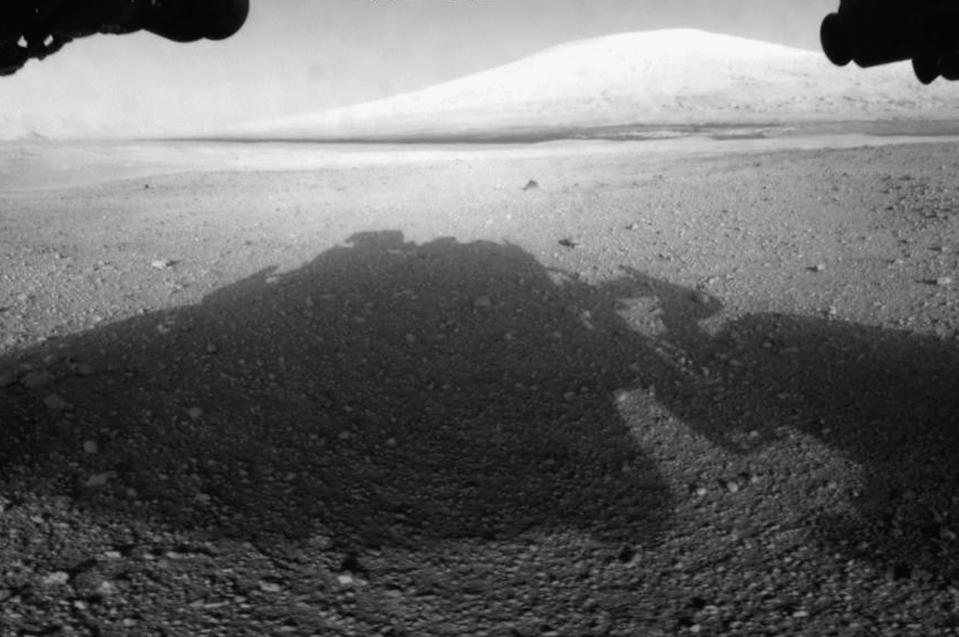Some volcanoes on Mars may still be active, giving warmth to potential sub-surface life, scientists say

The Martian sub-surface could be warm enough in places to support life, according to a new study.
Using data from satellites orbitting Mars, scientists found evidence of recent volcanic activity on the Red Planet in what could represent a major breakthrough in the search for alien life.
While most records of the Red Planet indicate that it was volcanically active between 3 and 4 billion years ago, with smaller eruptions likely continuing as recently as 3 million years ago in some locations, the current study, published in the journal Icarus, points to evidence that eruptions could have taken place in the past 50,000 years.
“This may be the youngest volcanic deposit yet documented on Mars. If we were to compress Mars’ geologic history into a single day, this would have occurred in the very last second,” said study lead author David Horvath, a research scientist at the Planetary Science Institute in Arizona, US.
Analysing satellite data, the scientists found evidence of an 8-mile-wide, smooth, dark deposit surrounding a 20-mile-long volcanic fissure, indicating it was produced by an eruption.
“When we first noticed this deposit, we knew it was something special,” said study senior author Jeff Andrews-Hanna, an associate professor at the University of Arizona Lunar and Planetary Laboratory.
“The deposit was unlike anything else found in the region, or indeed on all of Mars, and more closely resembled features created by older volcanic eruptions on the Moon and Mercury,” Andrews-Hanna said.
On further analysis of the data, they found that the properties, composition and distribution of the material matched what is expected for type of explosive eruption of magma driven by expanding gasses called a pyroclastic eruption, which is similar to opening a shaken can of soda.
Breaking: Volcanoes on #Mars could still be active, with eruptions having gone off as recently as within the past 50,000 years. This work, led by PSI's David Horvath, examines the age of lava flows seen MRO & matches hints of activity seen by @NASAInSight. https://t.co/89IvCw0d4C pic.twitter.com/PEK3tgoqEf
— PSI (@planetarysci) May 6, 2021
According to the researchers, the eruption site is about 1,600 kilometers from NASA’s InSight lander, which has been studying seismic activity on the Red Planet, and looking for “Marsquakes” since 2018.
NASA had found that these Martian equivalent of earthquakes originated in the region around the volcanic system with fissures and cracks called Cerberus Fossae, and recent studies had suggested the possibility that these could be due to the movement of magma below the planet’s surface.
“The young age of this deposit absolutely raises the possibility that there could still be volcanic activity on Mars, and it is intriguing that recent Marsquakes detected by the InSight mission are sourced from the Cerberus Fossae,” Horvath said.
Such volcanic deposits, the scientists believe, raise the possibility for habitable conditions below the surface of Mars in recent history.
“The interaction of ascending magma and the icy substrate of this region could have provided favorable conditions for microbial life fairly recently and raises the possibility of extant life in this region,” Horvath said.
Coupled with the volcanic deposits described in the current study, and evidence of seismic rumbling in the planet uncovered by InSight, and potential releases of methane plumes from below the surface detected by Nasa’s MAVEN orbiter, the scientists believe Mars is “far from a cold, inactive world”
“All these data seem to be telling the same story. Mars isn’t dead,” Andrews-Hanna added.
Read More
China rocket falling - latest: Experts track out-of-control spacecraft as it falls to Earth
China’s falling rocket: What happens if out-of-control Long March 5B hits the Earth?
Bezos’s Blue Origin selling tickets for brief trips to space

 Yahoo Finance
Yahoo Finance 